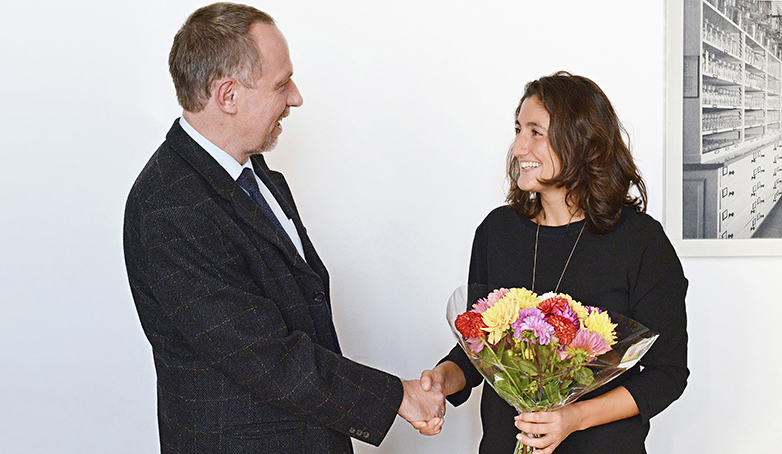Identifying the risk of premature birth
ETH biomechanic Sabrina Badir impressed the jury at the international ideas competition Falling Walls Lab. She developed a device that can determine the risk of a premature birth.
Sabrina Badir has developed a device that can help gynaecologists reliably determine the risk of premature birth in pregnant women at an early stage. She won first prize on Sunday at the Falling Walls Lab, an international competition for young scientists in Berlin. More than 1,300 young scientists from over 40 countries entered their ideas and projects in this year’s Falling Walls Lab competition. A hundred were selected to pitch their idea to the jury in a three-minute presentation.
Badir is overjoyed by her victory: “I managed to persuade the jury and those present that premature births are a problem and that we now have a diagnostic technique available that offers considerable benefits compared with existing methods,” says the 30-year-old from Zurich. “But to win the competition I also had to give a convincing presentation, so I’m pleased that I was able to come through in an international field against some very accomplished speakers from North America. My good preparation clearly paid off.”
Measuring tissue consistency
Badir developed the device to determine the risk of premature birth as part of her doctoral thesis under Edoardo Mazza, Professor of Mechanics at ETH Zurich. It is based on the simple, safe and reliable measurement of the consistency of a pregnant woman’s cervix. Scientific literature has shown that women whose babies were several weeks premature had a comparatively soft cervix in the second trimester. Put simply, Badir’s device is a small suction tube that provides data on the softness or rigidity of the tissue by measuring the pressure required to very gently suck a tissue section into the tube. If doctors identify an elevated risk of premature birth, they can take measures to delay the birth for as long as possible.
Since she completed her doctorate, Badir has been receiving support from ETH as a Pioneer Fellow. This enables her to focus on the device’s commercialisation, and develop business ideas and plans. Badir’s plan is to establish a company. In June, she won the prize for the best business idea at Swiss start-up competition Venture. A clinical study in collaboration with several hospitals, including University Hospital Zurich, began in 2014 and will run to 2017. The study aims to collect reliable data on the efficacy of the new method and, according to Badir, the first data confirms their expectations.
The study currently uses prototype devices, although Badir is now preparing to develop a standard product. The formal establishment of her firm – Pregnostics – is imminent and she says her primary focus at present is to find investors.

